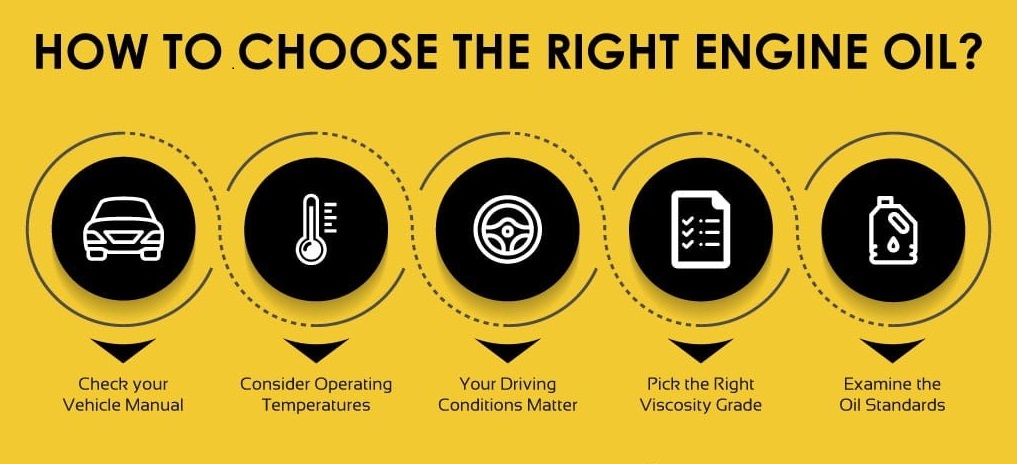

To choose the correct engine oil for your car, you must consult your owner’s manual to find the manufacturer’s recommendations for viscosity, type, and performance standard. The right oil is critical for engine longevity and performance, and using the wrong one can cause serious damage.
How to determine your car’s oil requirements
- Check your vehicle’s owner’s manual
The most reliable source for finding the right engine oil is your owner’s manual, or in some cases, the oil cap itself. It will specify all necessary information, including:
- Viscosity grade: The manual will list the appropriate Society of Automotive Engineers (SAE) viscosity grade, such as 5W-30.
- Performance standard: You will also find the required industry standards, such as those set by the American Petroleum Institute (API) or International Lubricants Standardization and Approval Committee (ILSAC). Newer vehicles often have stricter requirements.
- Oil type: The manual will specify whether your engine needs conventional, synthetic blend, or full synthetic oil.
- Understand viscosity grades (SAE)
Viscosity is the oil’s resistance to flow and is indicated by the numbers on the bottle, like 5W-30.
- The first number, followed by a “W” for winter, indicates the oil’s flow at low temperatures. A lower number, such as 0W, means it flows more easily in the cold, providing faster lubrication during cold starts.
- The second number indicates the oil’s viscosity at high temperatures, when the engine is at normal operating temperature. A higher number means the oil is thicker when hot, providing a stronger protective film.
- Choose your oil base type
Engine oils are made from different base oils, each with unique performance characteristics and price points.
|
Oil Type |
Features |
Best for |
|
Conventional |
Made from refined crude oil and is the cheapest option. |
Older vehicles with low mileage and moderate driving habits. |
|
Synthetic blend |
A mix of conventional and synthetic base oils. Offers better protection and performance than conventional oil at a more affordable price than full synthetic. |
Everyday commuting and vehicles under moderate driving conditions. |
|
Full synthetic |
Chemically engineered with fewer impurities and uniform molecules for superior performance. Offers better protection in extreme temperatures and resists breakdown for longer periods. |
Newer, high-performance, or turbocharged engines, and vehicles that operate in extreme heat or cold. It is often required to maintain the vehicle’s warranty. |
|
High-mileage |
Designed for vehicles with more than 75,000 miles. It contains additives and seal conditioners to reduce oil consumption, prevent leaks, and combat engine wear. |
Old engines that are prone to wear and oil leaks. |
- Confirm performance standards (API and ILSAC)
In addition to viscosity and type, ensure the oil meets the industry-recognized performance standards listed in your manual. Look for symbols like the API “donut” or “starburst” on the bottle.
- API Service Category: For gasoline engines, look for the current “S” category, such as API SQ (as of March 2025). Older “S” categories (e.g., SN, SM) are also compatible with older engines. For diesel engines, the category begins with a “C”.
- ILSAC: Look for the ILSAC GF-7 certification, required for modern, fuel-efficient engines.
How to use this information
To make your final decision, use this information along with the details from your owner’s manual. For example, if your manual specifies “API Certified SAE 5W-30 Full Synthetic Oil,” you should purchase an oil that explicitly lists this information on the product label.
For newer cars, it is crucial to follow the manufacturer’s recommendation precisely, especially regarding the base type (e.g., conventional vs. synthetic). If you have an older car, you may have more flexibility, but adhering to the manufacturer’s viscosity recommendation is always be

